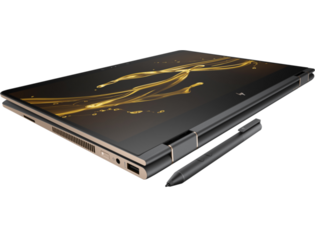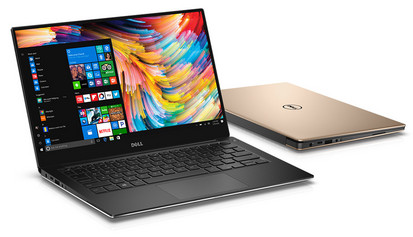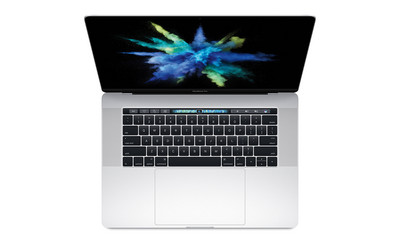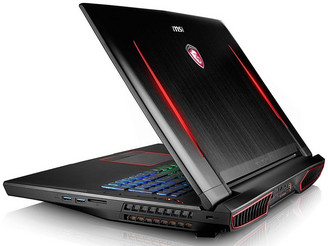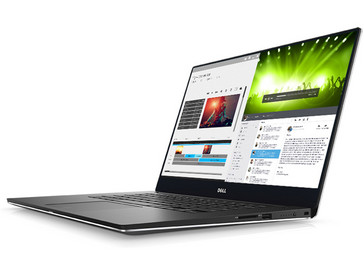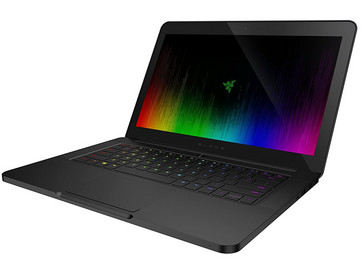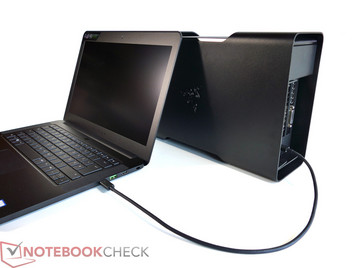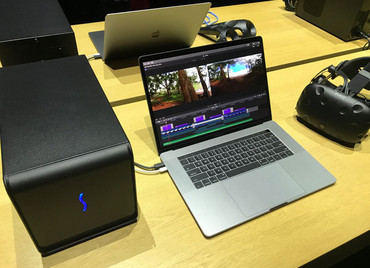Guide: Choosing Between Integrated or Dedicated Graphics
Introduction
Notebooks have evolved at an unprecedented rate. While improvements in processor technology have certainly paved the way for OEMs to fill the internals to the brim as much as possible, one component gets to decide the purchasing decision more than anything else these days - the graphics processing unit (GPU).
With software, (including OSs) relying heavily on the GPU to push pixels to offer richer user experiences, it has become all the more important to pay attention to the built-in graphics capabilities of your next notebook or ultrabook. What makes this even more intimidating is that there are more choices for notebooks and ultrabooks these days than you might imagine.
In this article, we will break down the pros and cons of both integrated and dedicated graphics processors to help you decide which best suits your needs before buying your next laptop.
Integrated Graphics
Today’s integrated graphics are far from lackluster. They can power full HD and even 4K resolution displays and more than one full HD external display without breaking much of a sweat. Most modern laptops powered by any of the Intel Core i-series processors come with integrated Intel HD Graphics 620, which is a very capable integrated GPU. If your work primarily revolves around Office work, surfing the internet, or streaming YouTube videos at 4K, these chips are more than capable. The HP Spectre x360 (2017) and the Razer Blade Stealth (Late 2016) feature Intel HD Graphics 620, which can easily power day-to-day tasks. The advantage of such a solution is ultra-portability combined with enough power for less demanding applications such as video streaming or even basic Photoshop work, along with some medium gaming on compatible titles such as Overwatch or FIFA 17. Don’t expect to game at full settings in demanding titles such as Witcher 3 or Battlefield 1, though. Above the HD 620/630 is Intel's Iris Pro line of "premium" integrated graphics. The performance of these premium integrated cards, such as the Iris Pro 640 found in the most powerful XPS 13, is more or less equivalent to the previous generation NVIDIA GeForce 940M. From the Apple camp, we have the MacBook Air and MacBook with Retina Display, which come with integrated Intel HD Graphics 6000 and 5300, respectively. This should be sufficient for regular tasks in macOS and a bit of SD video editing using Final Cut Pro.
AMD laptops are generally more affordable than their Intel counterparts and you should be considering them if all you need is a machine that you can depend on for your day-to-day tasks without breaking the bank. However, we would suggest that you wait till the latest AMD mobile APU (Accelerated Processing Units) based notebooks launch in Q3 2017 if you’d like to go with Team Red.
| 3DMark 11 - 1280x720 Performance GPU | |
| Intel Iris Pro Graphics 580 | |
| Intel Iris Plus Graphics 650 | |
| Intel Iris Plus Graphics 640 | |
| AMD Radeon R7 (Bristol Ridge) | |
| Intel HD Graphics 630 | |
| Intel HD Graphics 620 | |
| AMD Radeon R5 (Bristol Ridge) | |
| Intel HD Graphics 520 | |
| AMD Radeon R5 (Stoney Ridge) | |
| AMD Radeon R5 (Beema/Carrizo-L) | |
| Intel HD Graphics 510 | |
| Intel HD Graphics 515 | |
| Intel HD Graphics 4400 | |
Integrated graphic cards covering a large bandwidth of performance capabilities
All in all, opt for integrated graphics solutions if you value portability and battery life at much more affordable price points over improved performance and you have no need to play the latest games or play older games at full details at 60 frames per second.
A few words of caution, though: check the specifications of the laptop or ultrabook and make sure the integrated GPU can work for your needs. Remember that the integrated GPU uses system memory as a frame buffer and ultrabooks generally come with Low Power DDR (LPDDR) RAM and Ultra low voltage (ULV) CPUs, which can bottleneck the integrated GPU. It is always a good bet to know the class of processor and type of RAM used so that you can directly correlate that to the integrated graphics performance.
Dedicated Graphics
If you are looking at anything remotely graphic intensive, such as multiple-timeline editing in Premiere Pro, applying Photoshop filters across multiple layers, 3D modelling, or a decent gaming experience, you are better off with dedicated GPUs. They come with dedicated graphics memory that frees up system memory for other tasks. Just like CPUs that come with dual or quad cores, dedicated graphics cards come with many cores that enable parallel processing of visual data. NVIDIA calls them CUDA (Compute Unified Device Architecture) cores while AMD refers to them as ‘Stream Processors’. A GPU can contain hundreds or thousands of CUDA cores or Stream Processors depending on the requirement which is directly proportional to raw power. Dedicated notebook GPUs have evolved very much over the past few years with the latest NVIDIA notebook 10-series GPUs based on the Pascal architecture showing comparable performance to their desktop brethren.
While AMD is yet to revamp its line of Radeon notebook GPUs, you can find models which include the Radeon R5 to R9 which offer similar performance to an NVIDIA GeForce GTX 965M or 970M. Notebooks featuring the NVIDIA GTX 1050 and 1050 Ti are more than capable for video editing and moderate gaming. You will have no hiccups in playing titles such as Gears of War and Overwatch in high settings at 1080p, but you can forget about 4k gaming or playing the latest AAA titles on maxed settings if you want a smooth 60 frames per second. Thin notebooks such as the Aero 15 feature a GTX 1060 and now with Nvidia’s Max-Q initiative, a GTX 1080 can be fit into lighter and more portable laptops. The Asus Zephyrus ROG announced at Computex 2017 is one such example which implements Max-Q along with a GTX 1080 card — but it is important to remember that a “Max-Q” card will not be running at the performance level of its laptop or desktop analogue. Most of the laptops that feature the 10-series Pascal cards, come with a Core i5 or Core i7 HQ series processors and DDR4 memory clocked at or above 2400 MHz to make sure that the GPU is not bottlenecked. The GTX 1060 and above GPUs are also Virtual Reality (VR) capable which is something to look for if you are using VR headsets such as the Oculus Rift or the HTC Vive.
| 3DMark 11 - 1280x720 Performance GPU | |
| NVIDIA GeForce GTX 1080 Mobile | |
| NVIDIA GeForce GTX 1070 Mobile | |
| NVIDIA GeForce GTX 1080 Max-Q | |
| NVIDIA GeForce GTX 1060 Mobile | |
| AMD Radeon RX 460 (Laptop) | |
| NVIDIA GeForce GTX 1050 Mobile | |
| AMD Radeon Pro 460 | |
| AMD Radeon Pro 555 | |
| NVIDIA GeForce MX150 | |
| AMD Radeon Pro 450 | |
| NVIDIA GeForce 940MX | |
Dedicated graphic cards are starting where integrated GPUs give up
Apple, too has notebooks with dedicated graphics. The 15-inch MacBook Pro comes with dedicated AMD Radeon Pro 555/560 GPU with 2/4GB of DDR5 memory. Although this pales to what is available in the PC world, you should keep in mind that Apple optimizes its software to take full advantage of the GPU, which means that in the real world, these cards will be fine for video editing or other heavy processing — as long as you are using them in macOS.
While a laptop with a dedicated GPU sounds like utopia, dedicated graphics cards have their own share of cons – the biggest trade-offs being significantly reduced battery life if the dedicated GPU is used over the integrated one and increased thermal output. Dedicated GPUs need their own cooling systems and more often than not, these notebooks tend to heat up rapidly especially during intense gaming sessions and 3D rendering work. To further muddy the waters, some manufacturers fail to properly engineer their products to handle the combined heat output of their components, especially with small and slim laptops. Rather than using the appropriate cooling solutions, some OEMs resort to thermal throttling, which severely impacts performance. One of the many examples of this is Dell’s XPS 15 series, which are frequently seen to throttle down to 800MHz under sustained gaming, reducing performance to a slide show. And then there is of course the portability aspect. Do not expect battery power to last for more than a couple of hours with high-end configurations with no support for switchable graphics.
Switchable Graphics
Theoretically, switchable graphics are great. They let you use the integrated graphics for basic tasks and automatically switch to the dedicated GPU on-demand. NVIDIA calls this technology, Optimus while AMD calls it Enduro. The idea is to maximize battery life when not running graphic intensive applications. You might want to check if the notebook comes with Optimus enabled. The integrated graphics, in this case, becomes the main display controller while the dedicated GPU is ‘masked’ behind it. Therefore, the dedicated GPU has no direct access to the display. High-end gaming laptops with switchable graphics tend to come with a hardware switch called the multiplexer (MUX) which lets you switch between integrated and dedicated graphics. Some laptops also directly connect external monitors to the dedicated graphics card. Notebooks enabled with NVIDIA Optimus mostly lack a dedicated hardware multiplexer. Optimus is also counteractive to NVIDIA’s own G-Sync technology. G-Sync enables adaptive refresh rates (up to 120 Hz) on compatible displays to minimize screen tearing and other artefacts during intense gaming sessions. Since G-Sync requires a dedicated access to the display, notebooks that come enabled with NVIDIA Optimus cannot support G-Sync on the primary display. The only option in that case, would be to hook up an external display via DisplayPort or HDMI to enable G-Sync (if the port is directly connected to the GPU).
It is also important to not go overboard with the most powerful dedicated GPU you can find if you don’t need it. Going for a GTX 1080 laptop like MSI’s Titan series when you aren’t planning on 4k gaming is expensive, cumbersome, and unnecessary. A GTX 1050 will be enough for most games at medium settings or video editing, and a GTX 1060 will do well for 1080p gaming at high detail. Examples of notebooks aimed more at media creation than gaming include the Dell XPS 15 (9560), Lenovo Yoga 720 and the more recently announced Asus ZenBook Pro. If you are looking at a desktop replacement with a fair bit of portability check out the MSI GT83VR, nearly any larger Clevo/Sager, and even some of the Alienware models. If you are planning to lug around a mobile workstation for CAD/CAM work or 3D modelling, look out for laptops such as the Dell Precision series and HP ZBook series that come with professional grade NVIDIA Quadro or Radeon Pro GPUs. These are optimized by ISVs for excellent performance in demanding applications but they might not work well for gaming. Expect to pay quite a bit more for the performance premium, however. Also, be sure to absolutely steer clear of NVIDIAs 9-series GPUs as they are now passé and there are integrated GPUs which perform comparably with better battery life.
Are external GPUs the best of both worlds?
With the announcement of the new Thunderbolt 3 standard by Intel, which can boast of a theoretical 40Gb/s transfer speed over a USB Type-C port, notebook manufacturers have found ways of having the best of both worlds: the power efficiency of an integrated GPU along with the sheer performance of a dedicated card. Basically, an eGPU or external GPU consists of a case which houses a full desktop class video card and connects to the notebook over a Thunderbolt 3 or proprietary (in the case of the Alienware Graphics Amplifier) connection. The advantage of this setup is that you can use your notebook as-is while on the road or for more basic tasks but can hook up the eGPU once you return to the desk for enhanced gaming and 3D application experiences. There are a variety of TB3-based eGPU solutions available from many companies, including the Asus XG Station 2, Razer Core, Mantiz Venus, AKiTiO Node, PowerColor Devil Box, and Aorus Gaming Box.
So, are eGPUs finally the answer to our notebook graphics woes? Not entirely. Remember that although many notebooks these days come with Thunderbolt 3, it is important to note the transfer rate of the port. A Thunderbolt 3 port with 4 dedicated PCIe lanes (full 40Gb/s bandwidth) is much more suited for eGPUs than ones with just 2 lanes as the bandwidth is effectively reduced in half. Additionally, the TB3 interface itself causes a performance hit even under the most optimal conditions, as it does not directly connect to the CPU. This will likely be improved in the future, as Intel has announced plans to integrate the TB3 controller directly to the CPU. Another major point of consideration is price: often you need to pay separately for the eGPU case and the video card which can get expensive. eGPUs must be considered only when your notebook comes with just integrated graphics or low end dedicated graphics. Installing a high-end graphics card such as the GTX 1080/Ti in an eGPU to augment a notebook that is already running say, a GTX 1060 is not worth the extra dough and moreover, results in compromised performance. To quote from the conclusion of our Razer Core analysis:
All in all, the Core does what it says it does: it allows the user to attach an external graphics card to a computer with a TB3 port. However, the limitations of TB3 and the device need to be kept in mind to avoid unrealistic expectations of parity with desktop-gaming setups. It will get you close enough, though — for a price.
Conclusion
Today's integrated graphics, beginning with the Intel HD 620, are enough for most people who don't play triple-A games, game competitively, edit video in 4k, nor work with CAD. The Intel Iris Pro series of GPUs are a significant improvement on the HD 620 and will boost the speed of professional tasks, but will still provide only a lackluster gaming experience for demanding titles.
For those who want to play the latest games, 3D model, or edit 4k video, a dedicated GPU will significantly increase performance. Don't just buy anything with the highest numbers, however. First, make sure that you aren't overpaying for a card beyond your needs: a GTX 1060 is perfect for 1080p gaming at high details. Second, check that the laptop you are looking at can actually run its CPU and GPU at the speeds advertised. Lastly, whether you want a laptop with G-sync, Optimus, or a MUX will depend on your needs regarding battery life, response time, and color accuracy.
External GPUs are a great way to boost the performance of your laptop with integrated graphics, but they are of questionable use (and value) for laptops with a GTX 1060 or better. If money is not an issue and you will only be needing that graphical power in one location, then augmenting an ultrabook with an eGPU might be the most convenient solution.
Helpfull articles:
- Benchmark list of computer games running on laptop graphic cards - What GPU do I need to play my favorite PC game?
- Benchmark list of all mobile and desktop graphic cards - Compare desktop and mobile video cards according to their performance.




